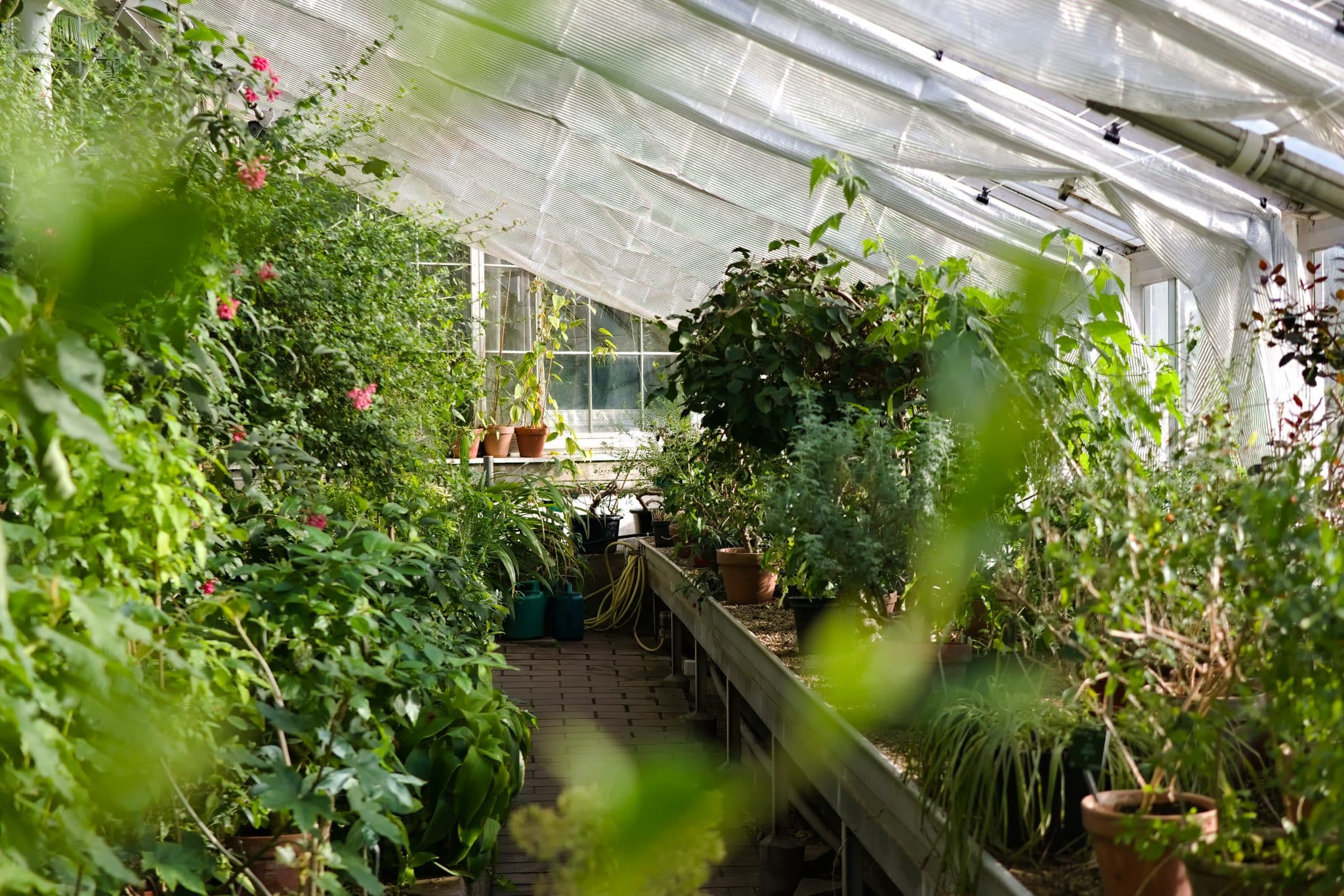The snow has come and gone and come again but still may not stick around. I can’t decide if I welcome its presence or if I am dreading the cold it represents. There is something magical about a blanket of snow covering the landscape. The quiet and stillness that a fresh snow falls brings is amazing.
Winter is here, regardless of the current snowpack. The days are short, the dark, cold nights are here.
For a brief moment the farmer may rest just like the crops they sow in the ground. Just the seeds awaiting the Spring. Rest. Winter gives in to rest. The dark evenings lead to cozy nights with hearty, warm foods. Soups become a staple. Storage crops become essential to the menu. A few hardy greens withstand the threat of freezing. Many are blanketed under cover crops or were started in early winter inside greenhouses so that one or two more harvests would be possible before the bitter cold strikes.
Greenhouses are nothing short of magical. They offer a bit of warmth and sanctuary away from the cold winds that nip noses and frost our fingertips. Yet a greenhouse is only able to do so much to lengthen the growing season. When the hard cold strikes it is often too costly and difficult for a farmer to keep a greenhouse at the temperatures required for growing produce. The greenhouses still provide an important job of keeping the deep freeze away. Greenhouses allow for early seed germination for crops that were harvested in December to grow- although this growth is slowed considerably. These plants still have a head start come the first warm temperatures and the farmer can often harvest these once-dormant plants earlier than if they started everything from seed.

While many things are put on hold and late December and early January are a time for rest, that doesn’t mean there isn’t beautiful produce still available. Many farmers have worked diligently to stock and store away many root vegetables, Winter squash and herbs. They have planned, strategized to provide local produce for as long as they possibly can.
Winter is a time to celebrate these hardy goods and take joy in the amazing storing ability that these goods have. I have tasted a Winter squash harvested in November, stored for many months and eaten during Summer. Winter crops are impressive. They are sturdy, they provide the sustenance needed to get through the cold.
I encourage you to celebrate root vegetables, Winter Squash and hardy leafy greens. Allow them to be the focal point of your Winter meals. Push their flavors in new directions. Substitute Winter Squash in place of tomato sauce. Stuff potatoes and crisp their skins like you would stuff and broil a Summer sweet pepper. Create new combinations for Winter salads. Try broiling your radishes in butter, allowing them to cool and adding them to hardy winter greens with grated cheese and a splash of balsamic vinegar. Instead of your regular stir fry vegetables focus on a root heavy option. Play with soups and sauces to adjust them to the seasonal options.

Here is what to look for as you create and explore new flavors in your kitchen, produce availability subject to your area:
Arugula
Beets
Broccoli
Brussel Sprouts
Carrots
Cauliflower
Celery
Celeriac or Celery Root
Chard
Chicory
Endive
Fennel
Garlic
Horseradish
Kale
Leeks
Mushrooms
Onions
Oregano
Parsley
Parsnips
Potatoes
Radicchio
Rapini
Rutabaga
Sage
Spinach
Sprouts
Sunchokes
Turnips
Watercress
Winter Squash
Root Vegetable Stir Fry

Enjoy a seasonal stir fry with root vegetables
Source: heartinsoil.comCourse: Side Dishes
Main Ingredient: Vegetables
Prep Time: 10 min
Cook Time: 15 min
Total Time: 25 min
Serves:
Ingredients
- 5-8 Cloves Garlic
- 4 1⁄2 Cups Chopped Root Vegetables Use potatoes, carrots, turnips, rutabaga, radishes.
- 3 Each Small Leeks
- 4 Cups Spinach
- 2 Tablespoons Coconut Oil
- 2 Tablespoons Coconut Aminos Can use soy sauce
- 1⁄2 Teaspoon Turmeric
- 1 Teaspoon Ground Ginger
- 1 Teaspoon Fish Sauce
- 1 Tablespoon Honey
Directions
- Heat coconut oil over medium heat.
- Peel and chop garlic cloves.
- Clean and chop root vegetables.
- Once pan is hot add garlic. Saute garlic for a couple minutes.
- Add the rest of the root vegetables.
- Clean and chop leeks.
- Rinse spinach and set aside.
- After a few minutes add leeks and continue to saute, stirring occasionally.
- Add coconut amino (can use soy sauce instead), turmeric, ginger powder, and fish sauce (can add extra coconut aminos or soy sauce instead).
- Saute vegetables until they are fork tender.
- Add the spinach and honey.
- Allow the spinach to wilt.
- Add salt and pepper to taste.
- Optional: serve over rice or noodles alongside your favorite protein or add your chosen protein to the dish to make it a one pan meal.

